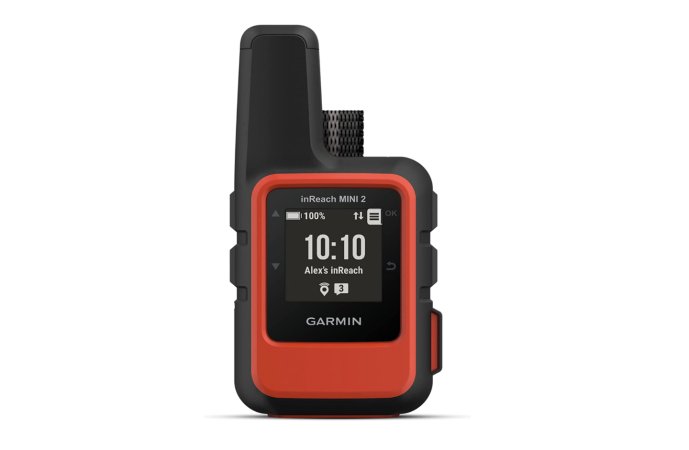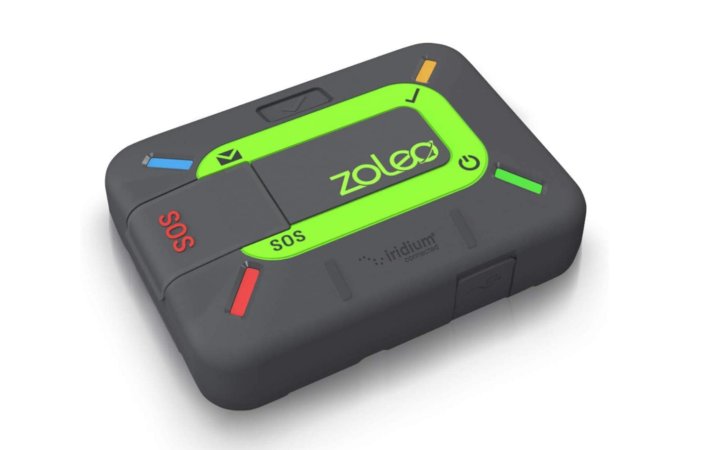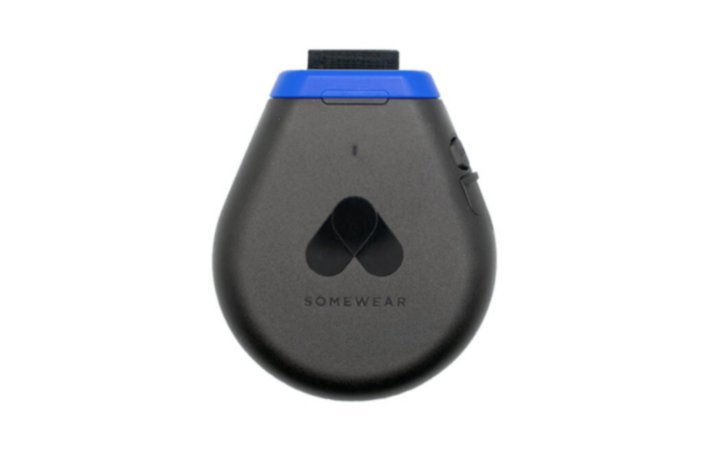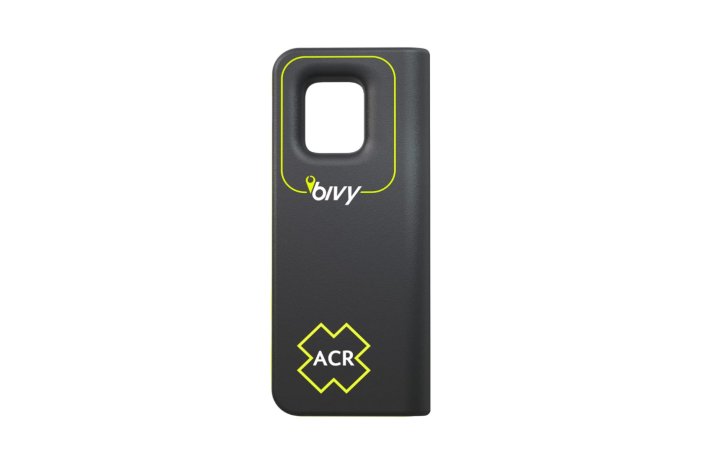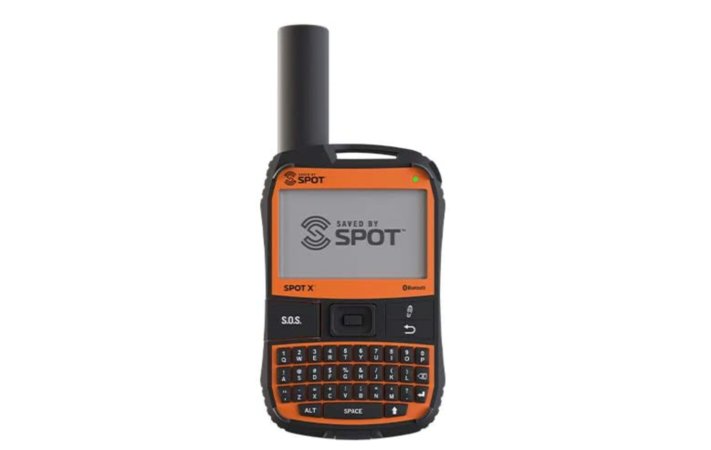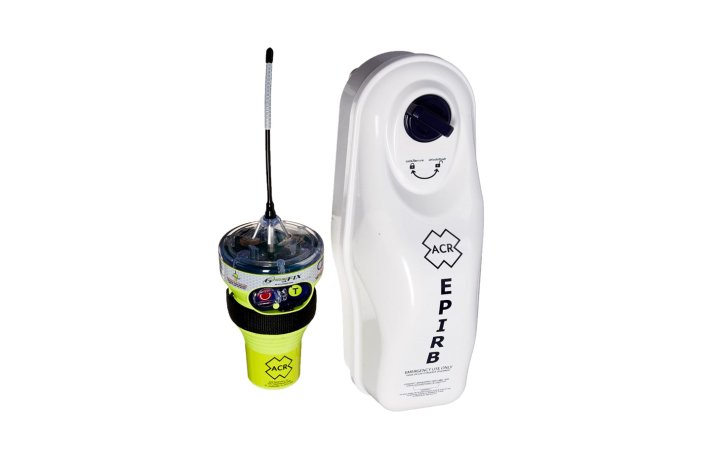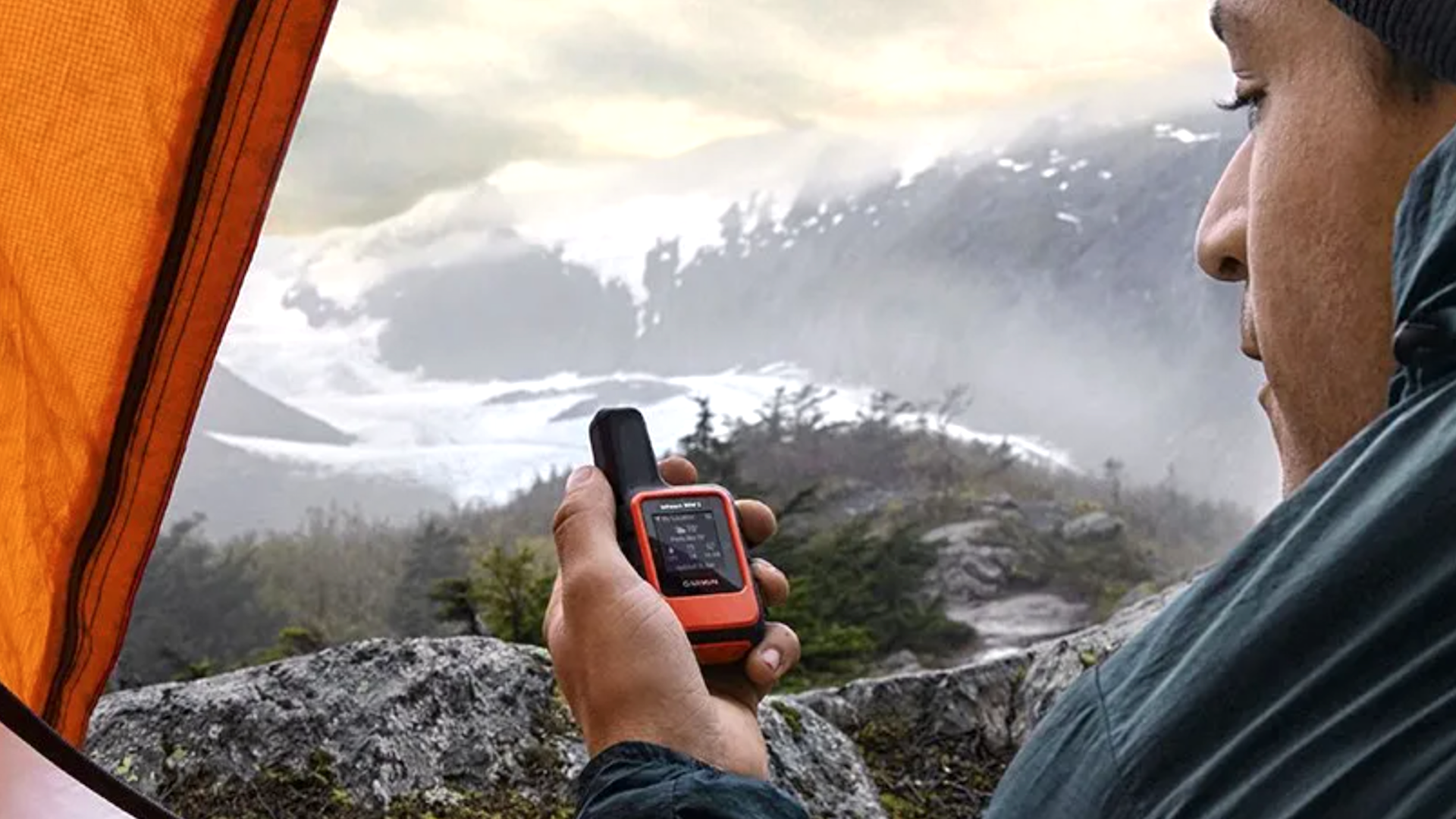

We may earn revenue from the products available on this page and participate in affiliate programs.
One of the joys of backcountry travel is getting far away from idiots, and the further you go away from civilization, the more you need to be prepared to rescue yourself — which is why personal locator beacons (PLBs) are so important.
I frequently hit the backcountry for days and travel to some pretty remote areas, places where cell phone coverage is sketchy to non-existent and we might see a few people per day, maybe. There are a lot of objective hazards in the wild, everything from heat exhaustion to hypothermia, lightning strikes to avalanches to venomous snake bites, and more. But without risk, there’s no adventure.
However, we should always take steps to mitigate risk, and part of that is having a communication and rescue plan. (The American Alpine Club’s Sharp End Podcast and its annual Accidents in North American Climbing publication are replete with people who wished they invested in a SATCOM messenger or personal location beacon.) With so many devices out there, it’s hard to know what product is best for you, and personal locator beacons have come a long way from the early days of push and pray (that it works and someone responds).
To that end, your trusty writers here at Task & Purpose have sifted through what’s available to recommend to you the very best personal locator beacons for your next outdoor adventure. Read on, and remember: when things go wrong, you’ll be happy you left home prepared.
- Best Overall: Garmin inReach Mini 2
- Best Value: Zoleo Satellite Communicator
- Most Intuitive: Somewear Labs Global Hotspot
- Honorable Mention: ACR Bivy Stick
- Best Stand-Alone: SPOT-X
- Best for Boating: ACR GlobalFix V4 Cat 1 EPIRB
Best Overall
Garmin inReach Mini 2
Pros
- Very reliable global connectivity
- Top performance and message reliability
- Small, packable
- Stand-alone two-way text messaging
- Weather forecasts
- Full functionality without needing a smartphone
Cons
- Tedious on-unit texting interface, much better with app
- Less battery life than larger devices
- Satellite only, no cell or WiFi data
- Expensive
Product Specs
- Weight: 3.5 ounces (100 grams)
- Dimensions: 2.04 x 3.90 x 1.03 inches
- Display size: 0.9 x 0.9 inches
- Messaging: Two-way, send and receive text
- Battery life: Up to 30 days*
- Sensors: GPS, Galileo, QZSS, Compass
- Weather report: Yes
- Subscription required: Yes, starting at $11.99/month
Best Value
Zoleo Satellite Communicator
Pros
- Global connectivity
- Small, packable
- Two-way communication
- Lightweight
- 24/7 monitoring
- Only unit with dedicated cell number for seamless messaging
- Cheaper data plan
Cons
- Cell phone-dependent for full functionality
- Doesn’t do tracking
- No mapping capability
- Heavier and larger than others
- Increased full system power requirements
Product Specs
- Weight: 5.3 ounces (150 grams)
- Dimensions: 3.58 x 2.6 x 1.06 inches
- Display size: N/A, connects to cellphone via Bluetooth
- Messaging: Two-way
- Battery life: Up to 200 hours
- Sensors: GPS, GLONASS
- Weather report: Yes, via phone app
- Subscription required: Yes, starting at $20
Most Intuitive
Somewear Labs Global Hotspot
Pros
- Global coverage
- Satellite, cell and WiFi data capable
- Intuitive user interface
- Lightweight
- Two-way messaging capable
- Real-time location sharing, tracking
- On-demand weather report (via cell phone app)
Cons
- Phone-dependent for full functionality
- No message display on device
- Increased full system power requirements
- Shorter battery life than other systems
Product Specs
- Weight: 4 ounces (113 grams)
- Dimensions: 3.0 x 3.6 x 0.8 inches
- Display size: N/A, connects to cellphone via Bluetooth
- Messaging: Two-way with cell phone pairing
- Battery life: Up to 10 days with 10-minute tracking
- Sensors: GPS
- Weather report: Yes, via phone app
- Subscription required: Yes, starting at $8.33/month
Honorable Mention
ACR Bivy Stick
Pros
- Capable SOS beacon
- Lightweight
- Two-way messaging capable
- Real-time location sharing
- On-demand weather report (via cell phone app)
Cons
- Requires cell phone for full functionality
- No message display on device
- Increased full system power requirements
- Shorter battery life than other systems
Product Specs
- Weight: 7 ounces (198 grams)
- Dimensions: 6.5 x 2.9 x 0.94 inches
- Display size: N/A
- Messaging: Two-way with cell phone pairing
- Battery life: Up to 10 days with 10-minute tracking
- Sensors: GPS
- Weather report: Yes, via phone app
- Subscription required: Yes, starting at $8.33/month
Best Stand-Alone
SPOT-X
Pros
- Easiest to use stand-alone two-way messaging user interface
- Smartphone interface
- Does tracking
- Check-in functionality
- Compass
- Dedicated U.S. mobile phone number
Cons
- Heavier
- Large, bulkier
- Takes about 5 minutes to send one message
- Antenna must be pointed vertical to sky
Product Specs
- Weight: 7 ounces (198 grams)
- Dimensions: 6.5 x 2.9 x 0.94 inches
- Display size: 2 x 1 1/8 inches
- Messaging: Stand-alone two-way
- Battery life: Up to 10 days with 10-minute tracking
- Sensors: Globalstar
- Weather report: N/A
- Subscription required: Yes, starting at $11.95/month
Best for Boating
ACR GlobalFix V4 Cat 1 EPIRB
Pros
- Actively fixes exact location
- Broadcasts SOS and coordinates via 406 MHz signal
- 66-channel GPS
- LED strobe
- Protective keypad
- User replaceable battery pack with 10-year life
Cons
- Expensive, but so is your life
- No LCD display
- No subscription required
Product Specs
- Weight: 27 ounces alone; 34.9 ounces with auto-release bracket
- Dimensions: 8 1/8 x 4 1/4 inches
- Display size: N/A
- Messaging: N/A
- Battery life: Up to 10 days with 10-minute tracking
- Sensors: COSPAS-SARSAT
- Weather report: No
- Subscription required: None; just register it first
Things to consider before buying a personal locator beacon
It’s important to remember that the wilderness can be dangerous, and even more so if you don’t have reliable communications to effect rescue should you need it. Many areas in the backcountry have exceptionally sketchy or non-existent cell coverage, so if something bad happens to you or your group there, things could go from bad to awful in a heartbeat. It’s very important to have a solid, redundant communication plan before you leave the trailhead, and a good PLB can keep you in contact with emergency response services. A great one can keep you in touch with friends and family and transform your smartphone into a Satcom device.
PLBs used to be press-SOS-and-pray your message would be received, delivering a one-way signal to emergency rescue services. Today, the latest devices have enabled two-way messaging, so it’s hard to justify purchasing one-way devices anymore. Two-way communication allows you to send your SOS and communicate with the rescue coordination center and responding on-scene rescuers. This can be the difference between life and death in some cases.
Level of stand-alone functionality
All of the devices reviewed have a global one-way SOS beacon capability in the stand-alone unit, but not all have stand-alone two-way messaging for emergency and non-emergency communication and require pairing with a smartphone and proprietary app for full functionality. This is important because the more complex a system, the more probability of failure. Also, smartphone-dependent devices also raise your power and recharging requirements in the backcountry and add additional weight to your pack.
Communication networks
Be sure to check if the device you are considering is satellite-only or if it can also communicate over cellular towers and WiFi. Of those that can, check to see if two-way messaging is seamless across networks for the best user experience.
Size and weight
When you have to carry every piece of equipment on your back for days, every ounce counts. Look for the lightest device that minimally meets your needs.
Battery life
This varies greatly across devices, especially if you have tracking enabled. Most devices can stay in tracking mode for several days before needing a recharge, and most need a Micro-USB or USB-C cable. Know that USB-C recharges twice as fast as devices using Micro-USB.
FAQs about personal locator beacons
Q: How much does a personal locator beacon cost?
A: Prices vary depending on unit capability. The very best unit I reviewed costs almost $400 for the PLB alone, and the cheapest costs about $250. Most require service contracts or subscription fees (costs vary widely) for both emergency and non-emergency communication, so you should definitely factor that into the cost of ownership and use.
Q: How does a personal locator beacon work?
A: When you press the SOS button, your PLB sends a powerful distress signal to a network of satellites around the globe. These distress signals are monitored by both government and private rescue coordination centers. The distress call is relayed to an appropriate response agency with data on your location. They, in turn, coordinate with local search and rescue organizations to come get your ass. Note that SAR assets vary from place to place, so you’re probably going to get a faster, more capable rescue in the Tetons than you would in less-resourced countries.
Q: When should I use my personal locator beacon?
A: Well, think of pressing SOS just like a 911 call. You should use it when you or a member of your team is at immediate risk of loss of life, sight, or limb, and when self-rescue and evacuation isn’t the speediest option.
Final thoughts
It’s been interesting watching personal locator beacons transition from push-SOS-and-pray someone hears your signal devices to true two-way messaging-capable satellite communication systems. Over the past decade, devices have become more capable, smaller, lighter, and cheaper — so much so that I can no longer recommend one-way SOS systems (maritime use excepted). In the event you do need to call for search and rescue, your likelihood of success increases dramatically with the ability to communicate two-way with the rescue coordination center and local on-scene responding SAR organizations, especially in restricted terrain. Of all the devices reviewed, none have yet reached perfection, but the Garmin inReach Mini2 reigns supreme for its stand-alone functionality, reliability, compact size, and lightweight packability. Are PLBs and satellite messengers worth it? Yes, because your life is worth it.
Methodology
I selected all of the personal locator beacons/satellite messengers in this review based on personal ownership, hands-on inspection, performance reputation, interviewing other experts, and thoroughly reviewing manufacturers’ specifications. I take my time to get to know the strengths and weaknesses of each item, and also check out the reviews of other experts just to make sure we’re not missing anything. For new items, I ask for samples from the makers and test them in the field. When that’s not possible, I visit the products in the store. In either case, I also review the manufacturers’ websites, user comments, YouTube reviews, and third-party evaluations, just to make sure I’m not missing anything.
When researching personal locator beacons, I based my criteria on my own experiences using outdoor gear in the field for more than 35 years. I’m very familiar with the major manufacturers of outdoor equipment, know their reputations, and have a sense of their customer service — which is also super important. I also speak with other people who spend considerable time outdoors for their thoughts as well.
After gathering enough high-performing products for a best-of article, I racked and stacked each based on their attributes, design, and performance. My bias is towards the lightest, best-functioning, and lowest-cost solutions available. We don’t torture test gear here at Task & Purpose — we test within normal usage limits. When gear does fail or break, we contact the manufacturer to see if and how it stands by its products. I also take a look at how easy the gear is to maintain or repair in the field — the simpler, the better.
For final selection, I take all factors into consideration and think: What is the gear I’d most want in my pack? What would I trust my life to in the backcountry? Those are the recommendations I forward for your consideration. Furthermore, it’s of the utmost importance to the Task & Purpose team that our readers know our commitment to open, fair product recommendations and reviews, and that you can trust us to provide you with unbiased, balanced information.
